Country 57/196: The Democratic Republic of the Congo
Destinations: Goma, Nyiragongo volcano
As Ebola continues to be an issue in the DRC, we decided to visit the country for only two days and to spend it in nature, far from the dangerous disease. The plan was to visit the DRC in December, but as Virunga National Park was closed from June 2018 due to some security concerns, we adjusted our plans and visited the first national park in the world in March. Our destination: the spectacular Nyiragongo volcano!

Things to see and things to do
The Democratic Republic of the Congo is known as the country with the highest number of bird and mammal species in Africa. Its flora and fauna could make the country a paradise for travelers. Virunga National Park, Kahuzi-Biega National Park (both UNESCO World Heritage Sites), the Nyiragongo and the Nyamulagira volcano, Lake Kivu and other mountain lakes, which bear a beautiful resemblance to alpine lakes in Europe are considered some of the country’s biggest attractions. The DRC is also a very popular gorilla trekking destination. Rwanda and Uganda may have better tourist infrastructure, but the DRC is the only country in the world where you can see both mountain and lowland gorillas. Besides, the gorilla trekking tours are way cheaper here than in Rwanda or Uganda. It was our plan to take a gorilla trekking tour, but sadly it was impossible. But we will definitely come back and do it eventually.
Goma and Lake Kivu
We entered the country in Goma, right at the stunning Lake Kivu, which is situated on the border between the DRC and Rwanda. Before entering the new and surprisingly fancy border control office, we had to wash our hands with chlorinated water and check our temperature at a UNICEF hand washing station and health control point. These health control stations have been installed all over the country to prevent any additional Ebola outbreaks.
After the usual border-crossing procedure, we met with our tour guide and we headed for the world-renowned volcano.
But first, we did a short tour of the city of Goma – the capital of North Kivu province. The city has often been affected by eruptions of Nyiragongo, but it always found a way to recover. The city itself is not a tourist destination, however, it is surrounded by many wonderful places that attract lots of tourists every year. Based on our short city tour, Goma seems to be a poor, yet vibrant city.


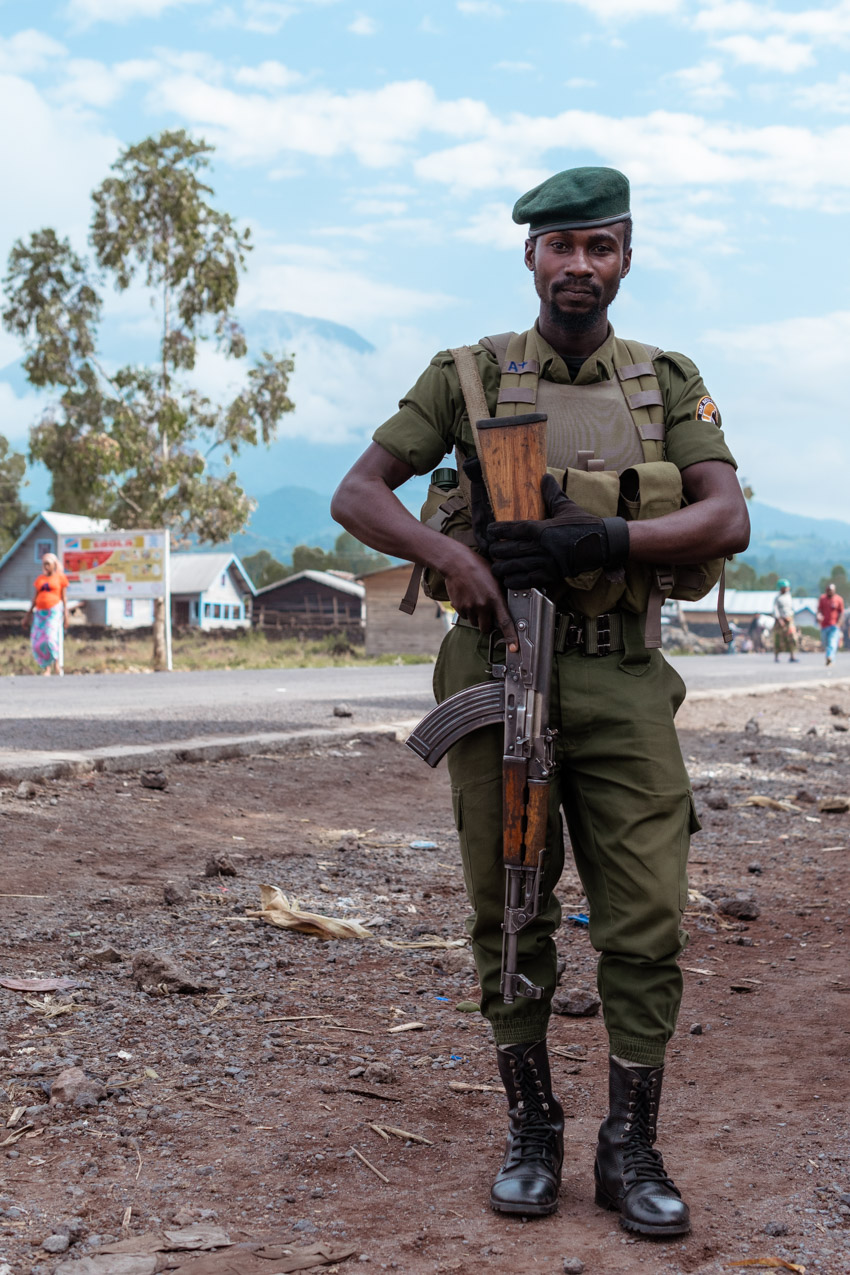
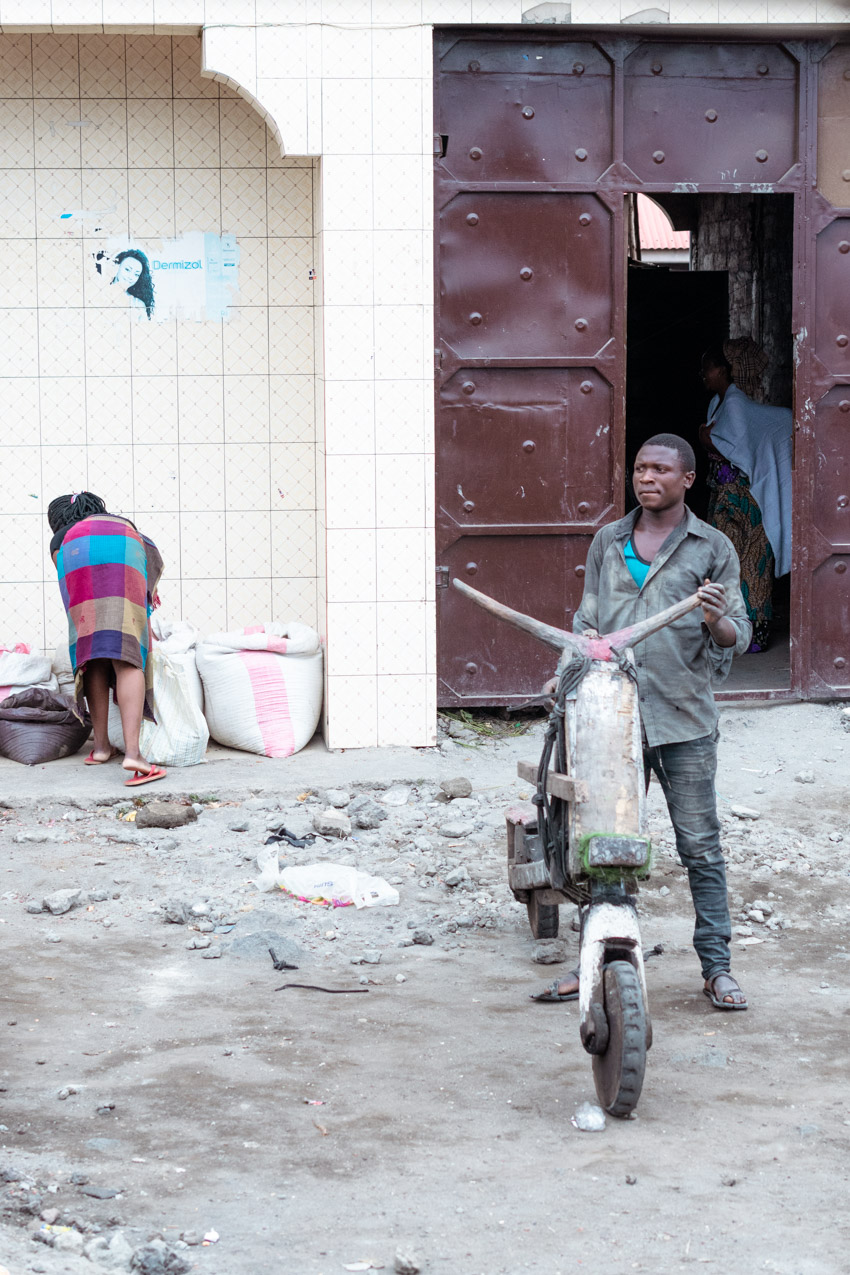






Virunga National Park and Nyiragongo volcano
At around 9.30, we arrived at the Parc National des Virunga camp at the foot of Mount Nyiragongo, which is located in the Virunga National Park. We left our big backpacks in their main office at the border, and in our smaller backpacks, we packed the essentials: waterproof clothing, some extra dry and warm clothes in a plastic bag, proper hiking shoes, sleeping bags with waterproof covers, waterproof covers for the backpacks, 3 liters of water each, and some snacks. The six armed park rangers, which had to accompany us for safety reasons (mostly due to the rebels and gorilla poachers lurking in the park) gave us some basic safety instructions and off we went.
The way up was pretty steep and slippery due to the many small rocks remaining from the previous eruptions. We had four 10-minute breaks and we reached the top at 3 pm, after a five-hour hike. The view was well worth it! We sat on the edge of the volcano for hours admiring the wild displays of lava and smoke. In the evening, the largest lava lake in the world lit up and created a surreal colorful show. It was nature at its best. ♥
We slept in small huts on top of the volcano just a few meters from the crater rim. Each hut contains two foam mattresses for you to lay your sleeping bag on. There is also a separate toilet hut located further down the ridge. The accommodation is basic, yet safe, and pretty comfortable. Besides, where else can you sleep on top of a volcano?
On the next day, we woke up at 6 am, went to say goodbye to the amazing lava lake and took some shots of the beautiful sunrise. After that, it was time to leave the volcano behind. It took us three and a half hours to reach the starting point. Our tour guide picked us up and drove us back to the beautiful Lake Kivu, where we rested our sore feet and enjoyed the wonderful view.






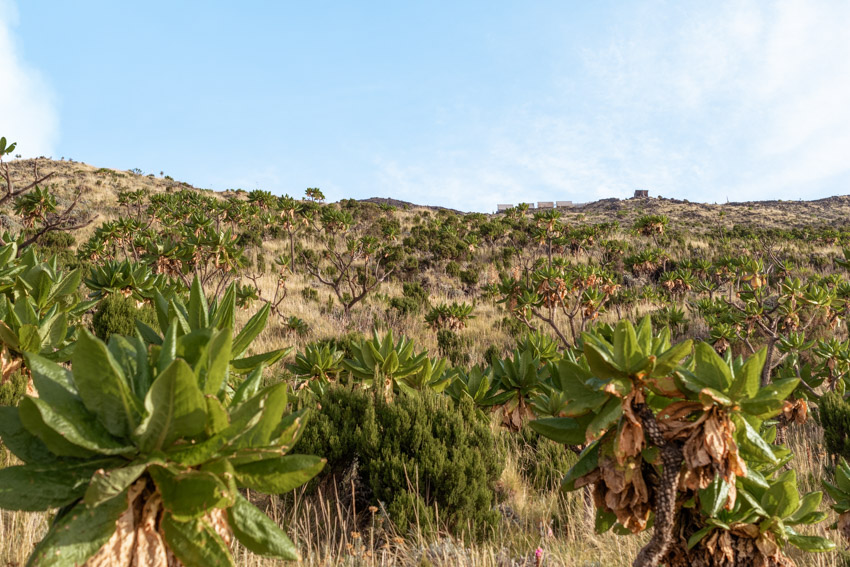






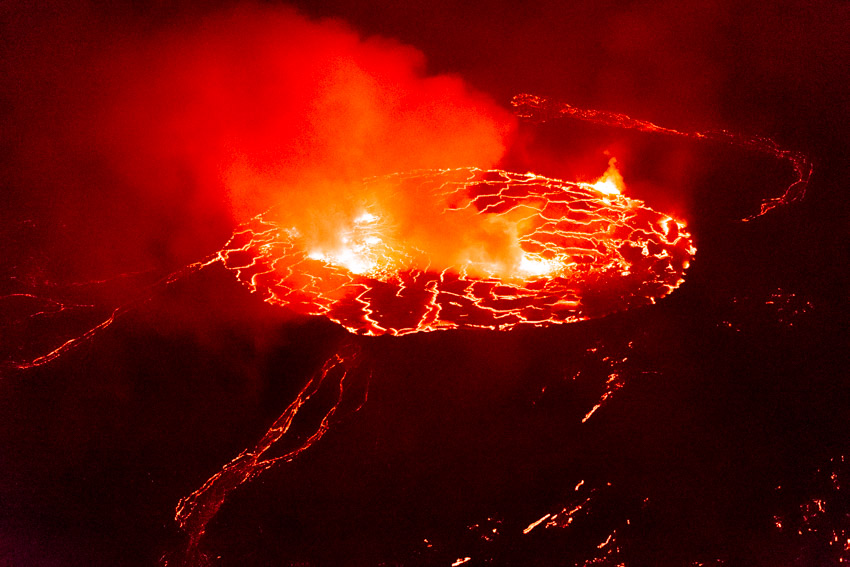
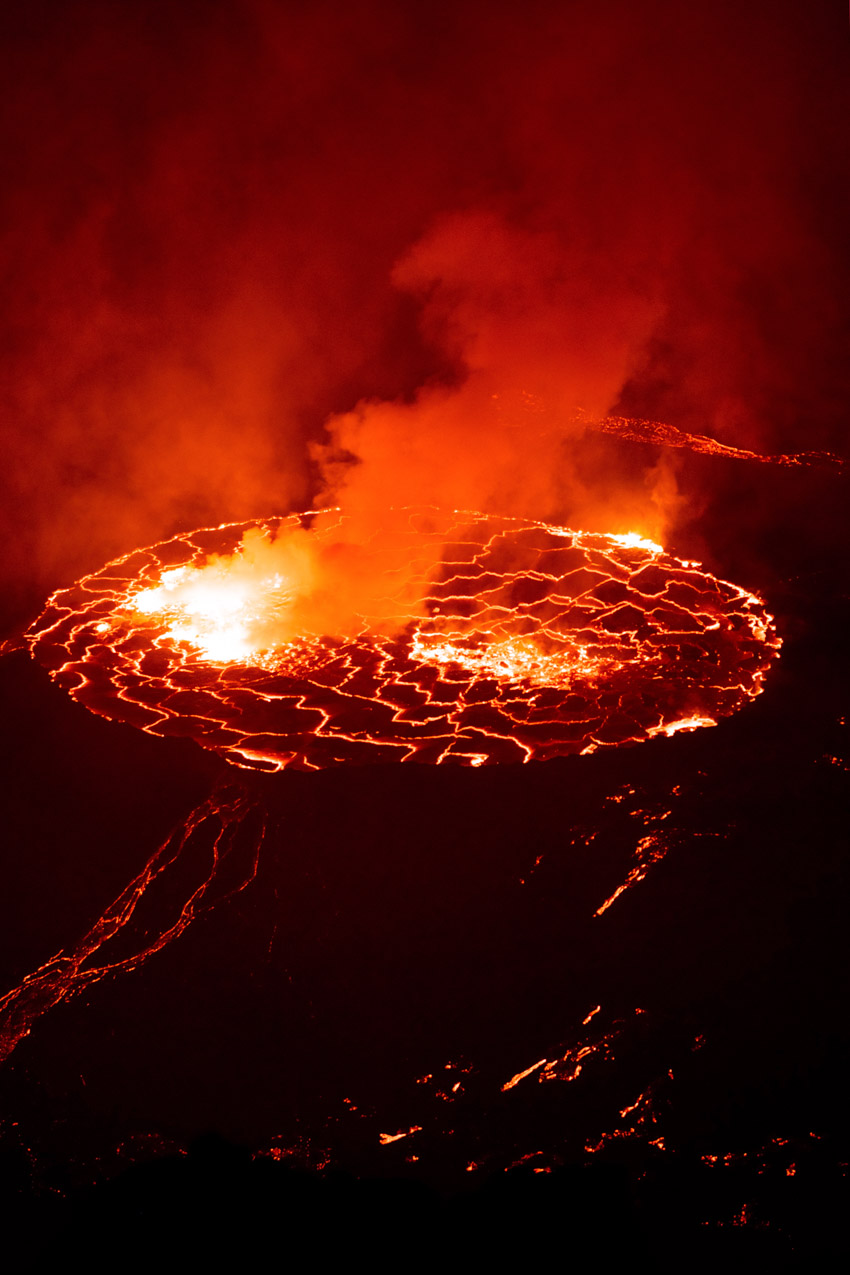
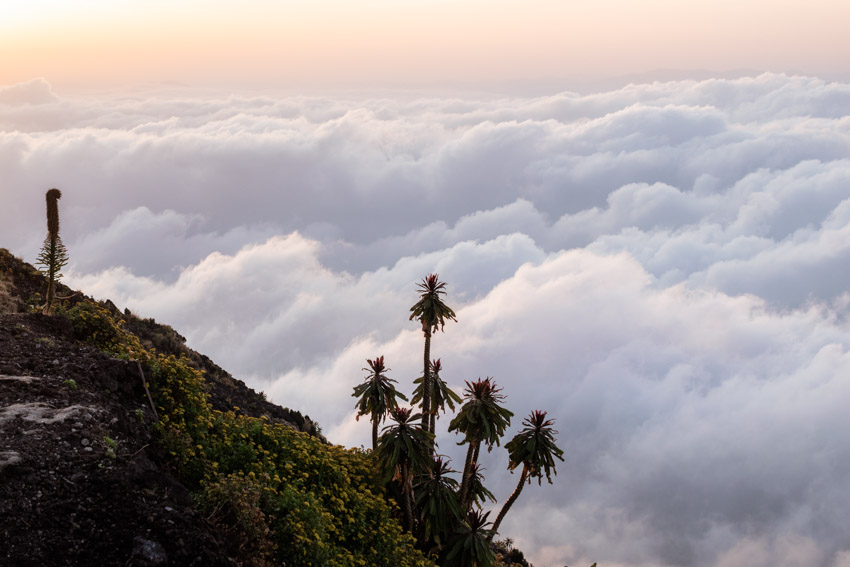






Democratic Republic of the Congo, it was a real pleasure!
Where to stay
If you are planning to visit the DRC, you are probably planning a tour to the volcano or a gorilla trekking tour. In this case, you are going to stay somewhere in the wilderness and you’re going to need a tour guide. We made all the necessary arrangements with The Virunga Foundation. They arranged everything from the visas, permits, a tour guide, park rangers, food, and accommodation. It is impossible to visit these places on your own and we highly recommend The Virunga Foundation, as they were very professional and made the whole experience simple and pleasant.
Are you planning to stay in Goma or another city? Here you can get a room with a 10% discount!
Budget
Gorilla trekking tours and volcano expeditions are obviously pretty pricey, especially due to the fact that you need armed park rangers and protection. However, as we have already mentioned before, the DRC is the cheapest gorilla trekking destination. Otherwise, the DRC is not a very touristy destination and it’s possible to travel the country on a budget. Food is inexpensive and local transportation is also relatively cheap.
Best time to visit
The best time to travel to DRC is during the long dry season from May to September or during the short dry season in January and February. Virunga National Park, the gorilla-trekking hotspot and the number one tourist destination is a year-round destination, but the most popular time to visit is the long dry season.
Environmental issues
The country’s nature conservation efforts are hampered by its poor economic conditions. The increase in agriculture and the urban population is causing severe deforestation throughout the country. The remaining forests are being overexploited. While setting forests on fire to clear the land for agriculture does open up economic activity through farming and herding, it endangers its diverse plant and animal species at the same time. Urban areas are battling air pollution and water pollution is also a pressing issue. In rural areas, only 51% of the population has access to potable water.
In recent years a lot of animal and plant species became endangered. Poaching and wildlife trade plays a big role in it, as poachers represent a major threat to elephants, gorillas, giraffes, and even the anti-poaching officers protecting the national parks.
However, despite severe deforestation, with 1,172,704 km2, the DRC is still the Nr 1 country with the largest forest area in Africa and the Nr 7 in the world.
196xLOVE
Found lots of LOVE in the DRC. 

Honeymoon rating of the visited destinations: ♥♥♥♥♡♡♡♡♡♡
As the DRC is still considered a politically unstable country and since it continues its struggle with Ebola, a honeymoon in the otherwise fascinating country may currently not be the best idea.
* Note: This is NOT a general rating of the country, it is merely our personal opinion of the mentioned site(s) as honeymoon destinations, based on the level of tourism development, the number and quality of romantic and adventurous activities and sites it offers, and safety. We strongly believe that every country is beautiful in its own way, they may simply be more or less honeymoon oriented/friendly.
** Follow our journey on Instagram. 
*** Use the form on the sidebar to subscribe to our newsletter and get a free customized e-postcard from every country!





 Destinations:
Destinations:

 Desti
Desti

 Destination:
Destination: 




 Destination: B
Destination: B



 De
De
